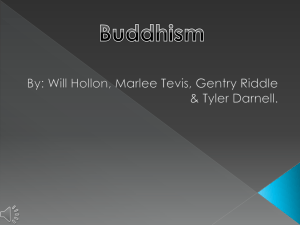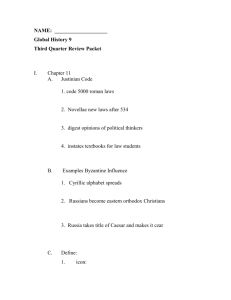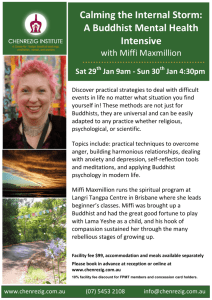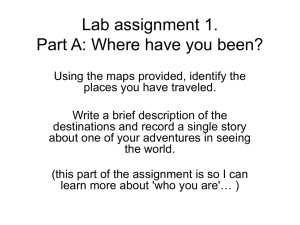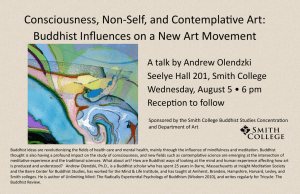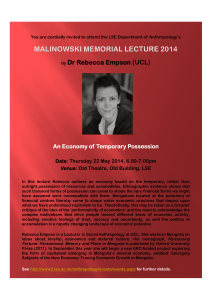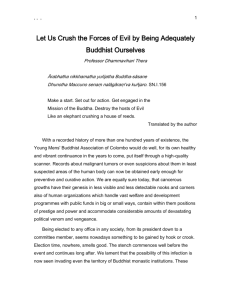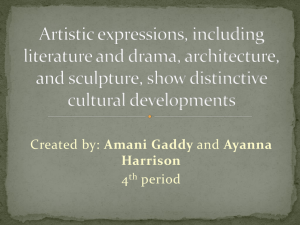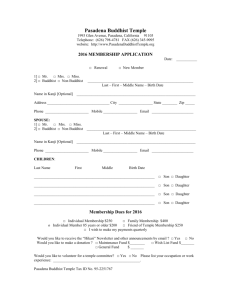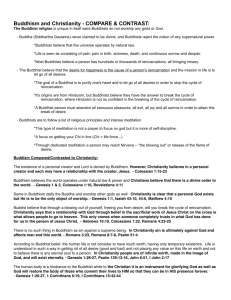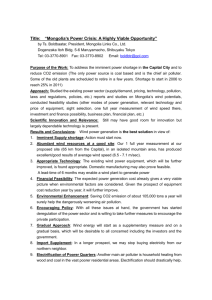Tibet & Mongolia - People Server at UNCW
advertisement
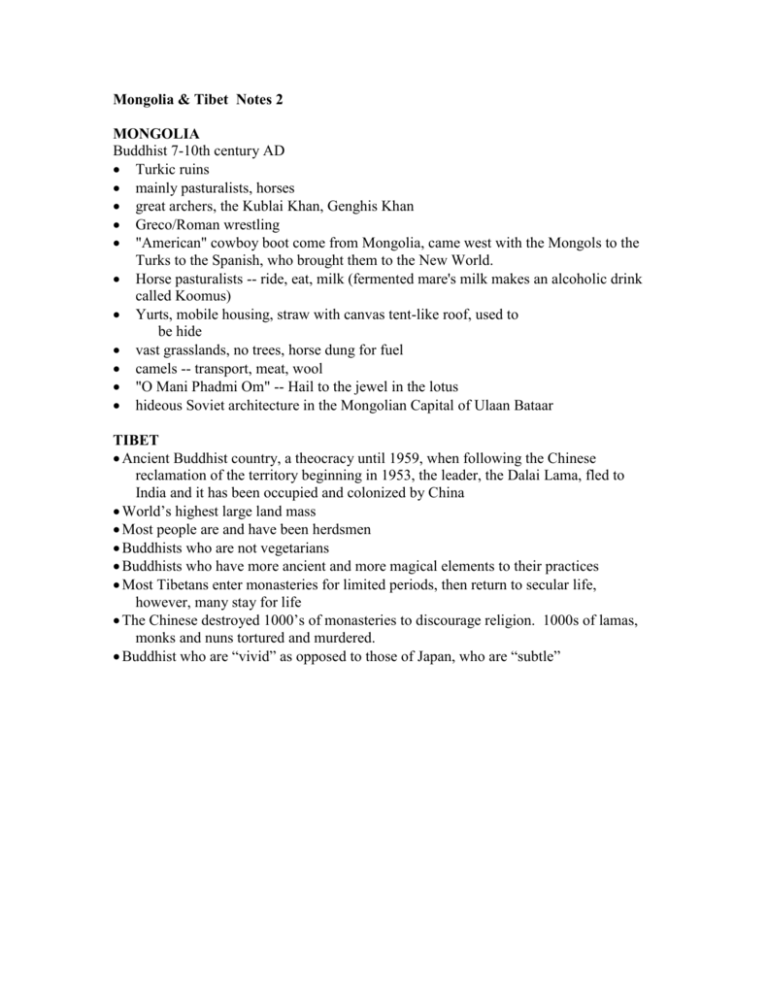
Mongolia & Tibet Notes 2 MONGOLIA Buddhist 7-10th century AD Turkic ruins mainly pasturalists, horses great archers, the Kublai Khan, Genghis Khan Greco/Roman wrestling "American" cowboy boot come from Mongolia, came west with the Mongols to the Turks to the Spanish, who brought them to the New World. Horse pasturalists -- ride, eat, milk (fermented mare's milk makes an alcoholic drink called Koomus) Yurts, mobile housing, straw with canvas tent-like roof, used to be hide vast grasslands, no trees, horse dung for fuel camels -- transport, meat, wool "O Mani Phadmi Om" -- Hail to the jewel in the lotus hideous Soviet architecture in the Mongolian Capital of Ulaan Bataar TIBET Ancient Buddhist country, a theocracy until 1959, when following the Chinese reclamation of the territory beginning in 1953, the leader, the Dalai Lama, fled to India and it has been occupied and colonized by China World’s highest large land mass Most people are and have been herdsmen Buddhists who are not vegetarians Buddhists who have more ancient and more magical elements to their practices Most Tibetans enter monasteries for limited periods, then return to secular life, however, many stay for life The Chinese destroyed 1000’s of monasteries to discourage religion. 1000s of lamas, monks and nuns tortured and murdered. Buddhist who are “vivid” as opposed to those of Japan, who are “subtle”
